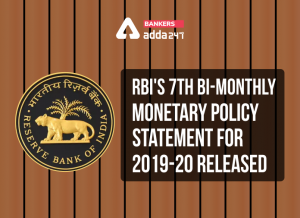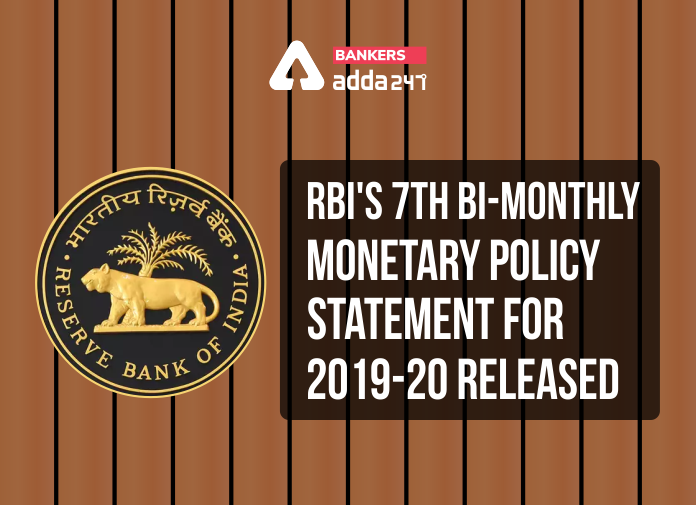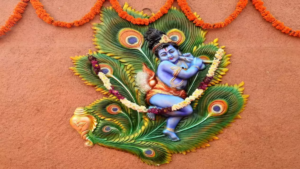
In view of the COVID-19 pandemic, the Reserve Bank of India’s Monetary Policy Committee (MPC) decided to advance the Bi-monthly Monetary Policy meet which was scheduled to be held on 31st March 2020 and the announcement was meant to be made on 3rd April. The meeting was advanced to 24th, 26th and 27th March 2020. During the seventh Bi-monthly Monetary Policy meet, the MPC analysed the current & evolving macroeconomic and financial conditions and has decided to take a accommodative stance and hence reduced the policy repo rate to revive growth as well as to mitigate the impact of COVID-19. With its decisions, MPC aims to keep inflation within the target and hence to preserve financial stability.
Click Here To Get Test Series For SBI PO 2020
The key decisions taken in the 7th Bi-Monthly Monetary Policy Committee meeting are:
- The repo rate under the liquidity adjustment facility (LAF) has been reduced by 75 basis points from 5.15% to 4.40%.
- The reverse repo rate under the LAF has been reduced by 90 basis points from 4.90% to 4.00%.
- The marginal standing facility (MSF) rate and the Bank Rate have been reduced from 5.40% to 4.65%.
Apart from above, RBI has also decided to reduce the Cash reserve Ratio of all banks by 100 basis points from 4% to 3% of Net Demand and Time Liabilities. This would be effective from 28th March 2020 for a period of one year. Also, all lending institutions have been allowed a moratorium period of 3 months for all term loans outstanding as on March 1, 2020.
What is Monetary policy?
Monetary Policy is the central bank’s policy which uses the monetary instruments like Repo rate, Reverse repo rate, Liquidity Adjustment Facility and many others, to achieve the goals stated in the Act. In India, the Reserve Bank of India (RBI) has been given the responsibility of conducting monetary policy as mandated under the Reserve Bank of India Act, 1934.
Objectives of monetary policy?
- The monetary policy has the prime objective of maintaining the price stability in India along with the objective of growth. Price stability is stated as a necessary precondition to achieve the sustainable growth.
- The Reserve Bank of India is also given the task of flexible inflation targeting framework along the Government of India as per the amendment in the Reserve Bank of India (RBI) Act, 1934 which was done in May 2016. This is done once in every five years. Government of India has notified the 4 per cent Consumer Price Index (CPI) inflation as the target for the period from August 5, 2016 to March 31, 2021 in the Official Gazette. The target is stated with the upper tolerance limit of 6 per cent and the lower tolerance limit of 2 per cent.
The Monetary Policy Framework:
The amendment in the Reserve Bank of India (RBI) Act, 1934 provides the Reserve Bank of India a legislative mandate to operate the monetary policy framework of the country. This framework aims to set the policy (repo) rate after the assessment of the current and evolving macroeconomic situation, and modulation of liquidity conditions to anchor money market rates at or around the repo rate.
What is the Composition of the Monetary Policy Committee?
The Central Government has constituted the six-member monetary policy committee (MPC) in September 2016, according to the Section 45ZB of the amended RBI Act, 1934.
The composition of the Monetary Policy Committee is as follows:
1. Governor of the Reserve Bank of India – Chairperson, ex officio: Shri Shaktikanta Das
2. Deputy Governor of the Reserve Bank of India, in charge of Monetary Policy– Member, ex officio: Dr. Michael Debabrata Patra
3. One officer of the Reserve Bank of India to be nominated by the Central Board – Member, ex officio: Dr. Janak Raj
4. Dr. Chetan Ghate, Professor, Indian Statistical Institute (ISI): Member
5. Dr. Pami Dua, Director, Delhi School of Economics: Member
6. Dr. Ravindra H. Dholakia, Professor, Indian Institute of Management, Ahmedabad: Member.
Some important instruments of Monetary Policy:
The RBI’s Monetary Policy has several direct and indirect instruments which is used for implementing the monetary policy. Some important instruments of Monetary Policy are as follows:
- Repo Rate: It is the (fixed) interest rate at which banks can borrow overnight liquidity from the Reserve Bank of India against the collateral of government and other approved securities under the liquidity adjustment facility (LAF).
- Reverse Repo Rate: It is the (fixed) interest rate at which the Reserve Bank of India can absorb liquidity from banks on an overnight basis, against the collateral of eligible government securities under the LAF.
- Liquidity Adjustment Facility (LAF): The LAF has overnight as well as term repo auctions under it. The term repo helps in the development of the inter-bank term money market. This market sets the benchmarks for pricing of loans and deposits. This helps in improving the transmission of monetary policy. As per the evolving market conditions, the Reserve Bank of India also conducts variable interest rate reverse repo auctions.
- Marginal Standing Facility (MSF): MSF is a provision which enables the scheduled commercial banks to borrow additional amount of overnight money from the Reserve Bank of India. Bank can do this by dipping into their Statutory Liquidity Ratio (SLR) portfolio up to a limit at a penal rate of interest. This helps the banks to sustain the unanticipated liquidity shocks faced by them.
Accommodative stance of RBI’s Monetary Policy Statement:
Accommodative stance is taken by the RBI’s Monetary Policy Committee to expand the overall money supply to boost the economy when the growth is slowing down.
Important takeaways for all competitive exams:
- RBI 25th Governor: Shaktikant Das; Headquarters: Mumbai; Founded: 1 April 1935, Kolkata.









 States and Capitals - How Many States in...
States and Capitals - How Many States in...
 Krishna Janmashtami 2025, When and How i...
Krishna Janmashtami 2025, When and How i...
 Unsung Heroes of Freedom Struggle: Kanak...
Unsung Heroes of Freedom Struggle: Kanak...

